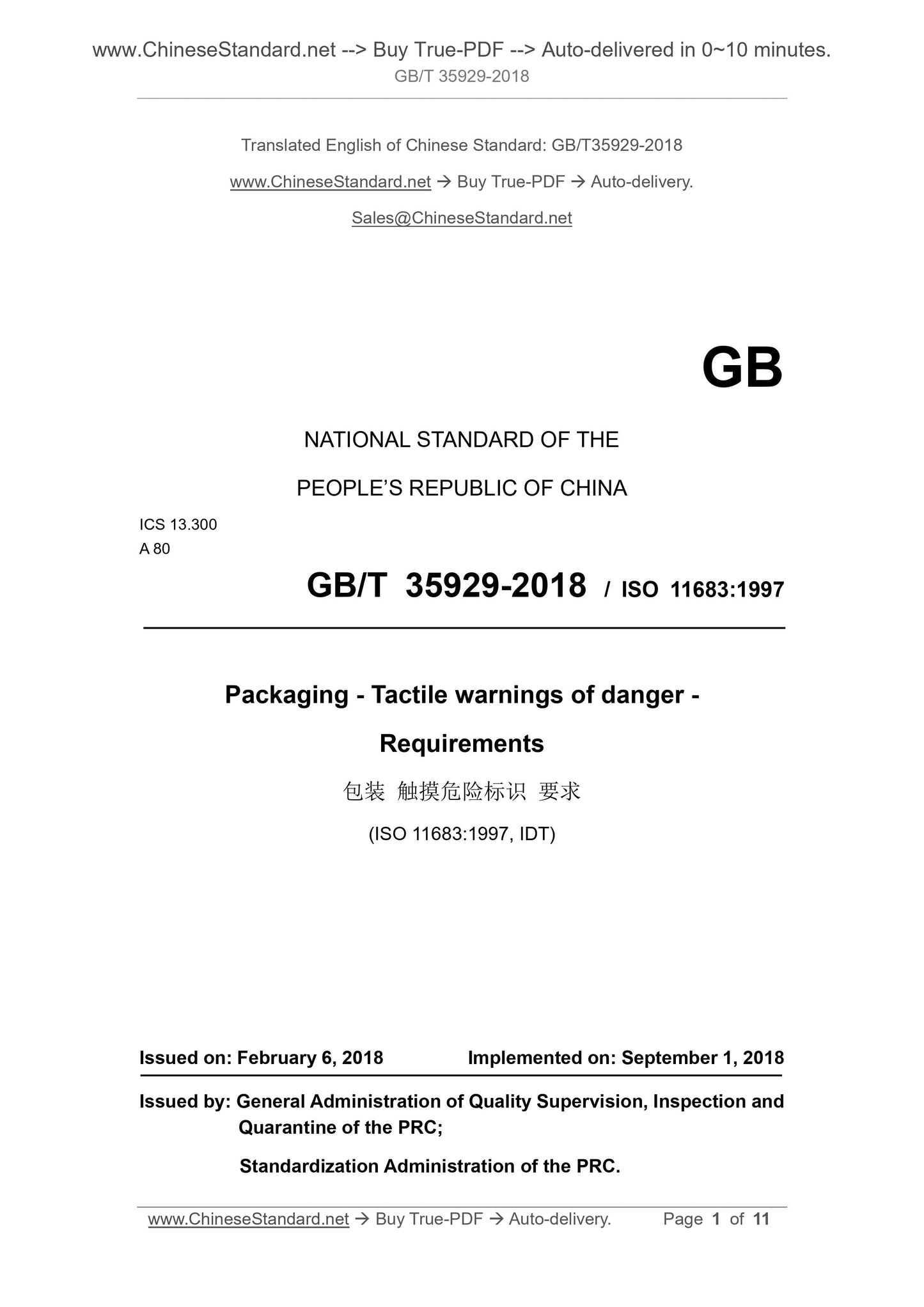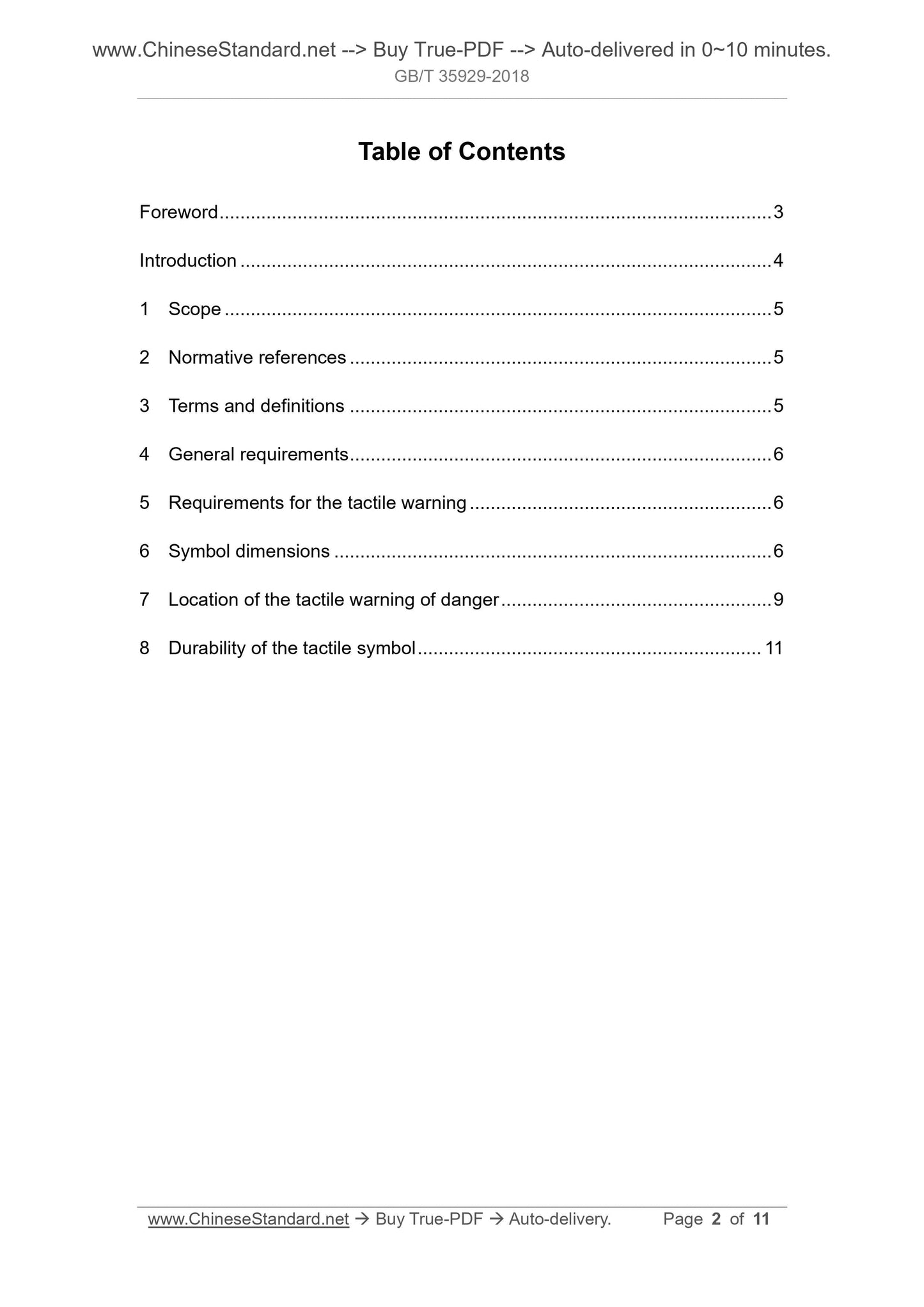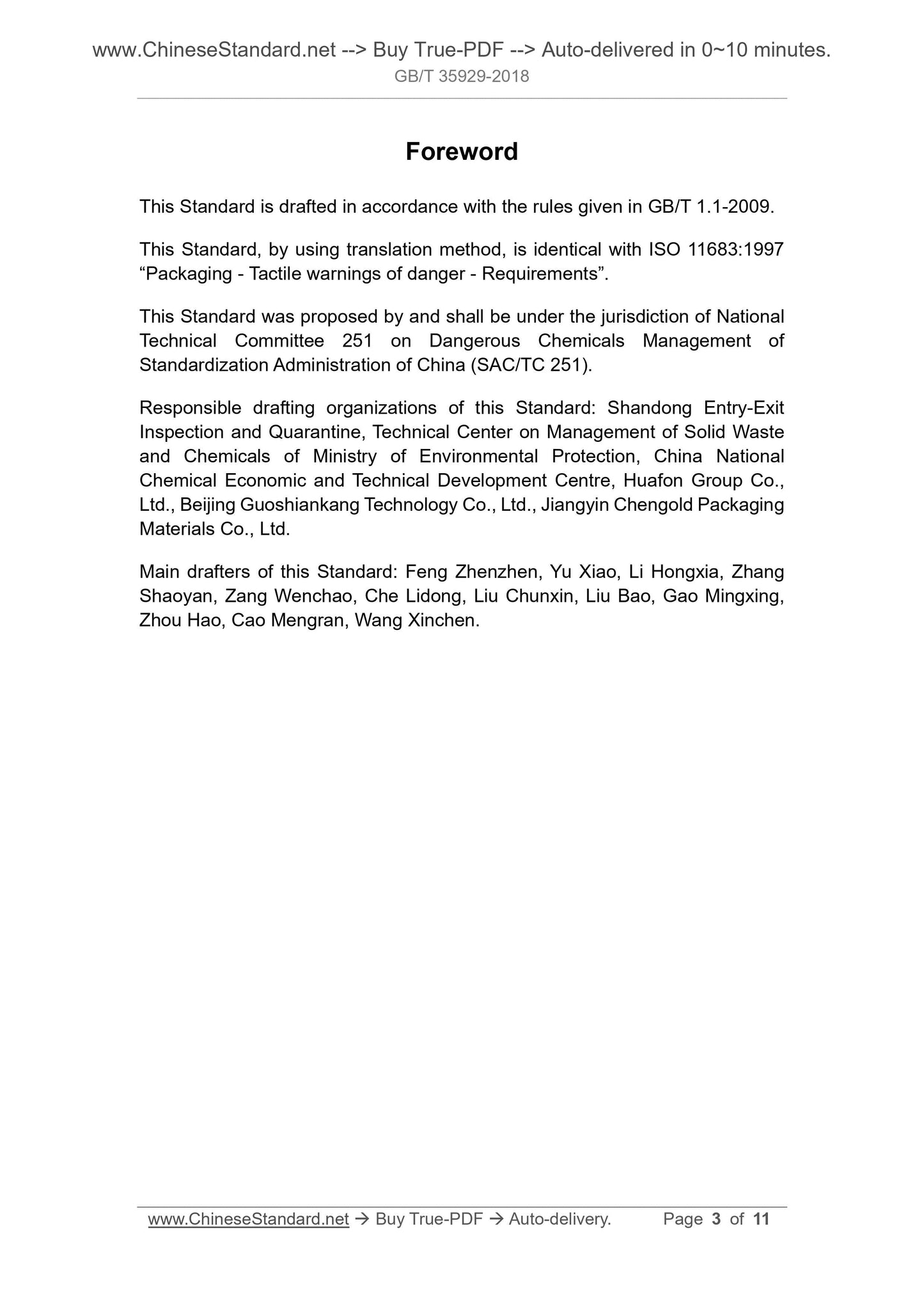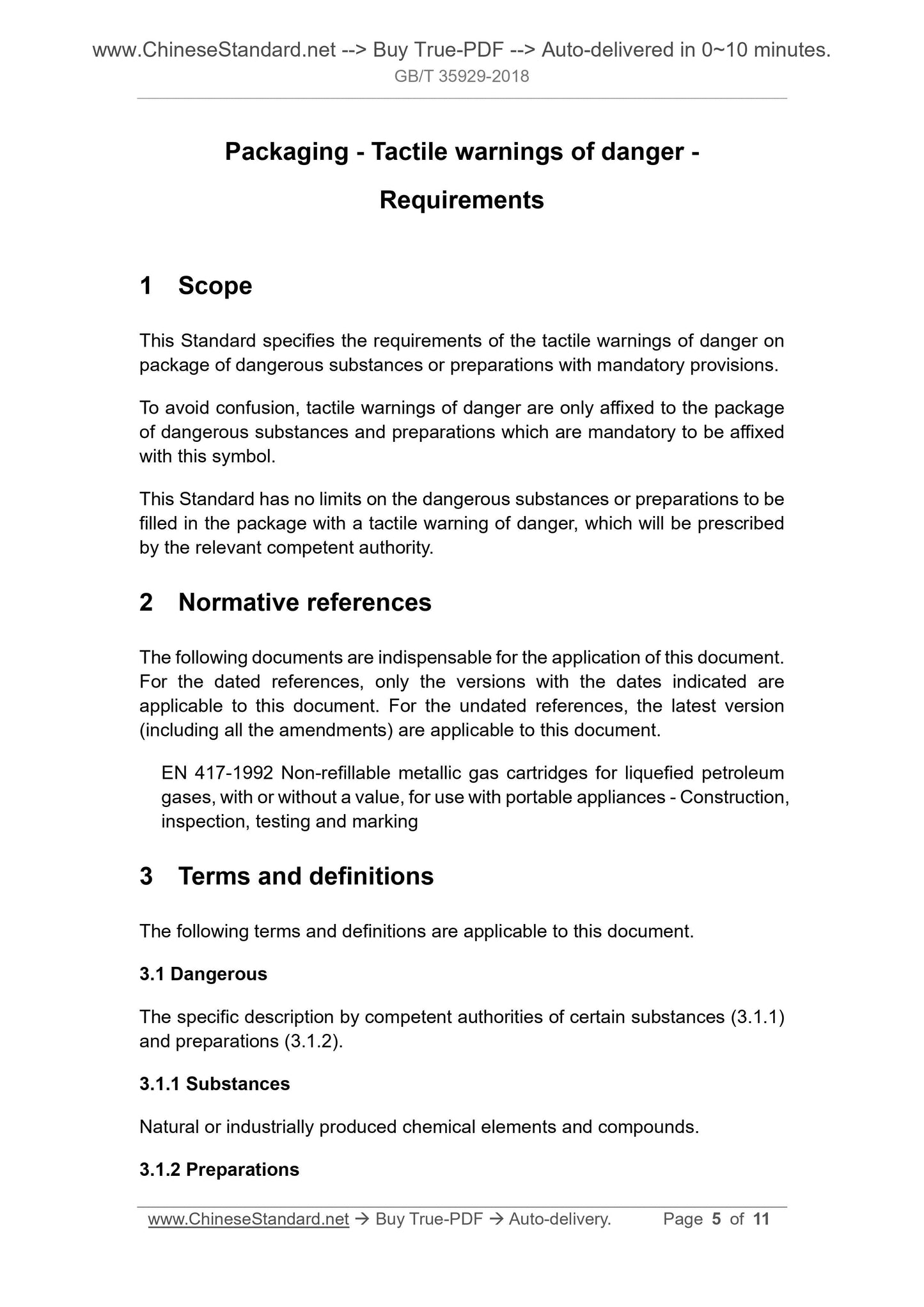1
/
of
4
www.ChineseStandard.us -- Field Test Asia Pte. Ltd.
GB/T 35929-2018 English PDF (GB/T35929-2018)
GB/T 35929-2018 English PDF (GB/T35929-2018)
Regular price
$140.00
Regular price
Sale price
$140.00
Unit price
/
per
Shipping calculated at checkout.
Couldn't load pickup availability
GB/T 35929-2018: Packaging -- Tactile warnings of danger -- Requirements
Delivery: 9 seconds. Download (and Email) true-PDF + Invoice.Get Quotation: Click GB/T 35929-2018 (Self-service in 1-minute)
Newer / historical versions: GB/T 35929-2018
Preview True-PDF
Scope
This standard stipulates the requirements for mandatory hazard labeling on the packaging of hazardous substances or preparations.To avoid confusion, touch hazard labels are only affixed to the packaging of hazardous substances and preparations that are compulsorily affixed to this label.
This standard is not limited to dangerous substances or preparations that are to be packed in packages with touch hazards. This will be handled by the relevant competent authority.
The door is regulated.
Basic Data
| Standard ID | GB/T 35929-2018 (GB/T35929-2018) |
| Description (Translated English) | Packaging -- Tactile warnings of danger -- Requirements |
| Sector / Industry | National Standard (Recommended) |
| Classification of Chinese Standard | A80 |
| Classification of International Standard | 13.300 |
| Word Count Estimation | 10,160 |
| Date of Issue | 2018-02-06 |
| Date of Implementation | 2018-09-01 |
| Issuing agency(ies) | State Administration for Market Regulation, China National Standardization Administration |
Share







